In the world of cars, a badge can mean a lot more than just a name — it can evoke the promise of exhilarating performance, refined engineering, and exhilarating driving dynamics. Yet, in today’s automotive landscape, badges often tell a story that doesn’t always match reality.
Car manufacturers, in an effort to market their vehicles as high-performance machines, sometimes adorn their models with badges and design cues typically reserved for true sports cars, only to leave the performance far behind. These vehicles — the ones we call “fake performance badge cars” — often look like they belong on the racetrack, but fail to deliver the expected thrills.
Their aggressive grilles, sharp lines, and bold badges lure buyers into believing they’re getting something special under the hood, only to find that their performance barely exceeds that of standard models.
On the flip side, there’s a class of cars that defy expectations by quietly embodying some of the most impressive engineering feats in the industry, yet remain relatively unheralded and unnoticed by the masses. These “sleeper” cars are the ultimate underdogs, vehicles that come equipped with enough power, agility, and performance to leave even the most seasoned sports car drivers in the dust.
At first glance, they may appear as innocuous family sedans, hatchbacks, or crossovers, but they possess the heart and soul of a true performance vehicle. Despite their unassuming appearances, these sleepers are capable of blistering acceleration, cornering finesse, and mind-boggling speed, often outclassing much more expensive and flashy sports cars. The fact that they do all of this while maintaining the civility and comfort of everyday cars makes them an exhilarating and sometimes surprising choice for those in the know.
In this article, we explore two contrasting worlds: 5 sleeper cars that can outpace sports cars and 5 cars with fake performance badges into the world of “fake” performance cars, exposing the vehicles that fooled buyers with their supposed muscle and performance, only to disappoint when the rubber met the road. that mislead buyers into believing they’re getting a high-performance machine when, in reality, they’re not.
These sleepers and impostors represent the extremes of modern automotive design — where a car’s appearance, badge, and marketing can play as much of a role in its identity as its true engineering. Some of the sleeper cars we’ll discuss may surprise you, showcasing how mundane vehicles can hide extraordinary capabilities under the surface.
Meanwhile, we’ll dive into the world of “fake” performance cars, exposing the vehicles that fooled buyers with their supposed muscle and performance, only to disappoint when the rubber met the road.
Performance car enthusiasts know that the real magic lies in the drive, not in the badging. So, whether you’re a seasoned car aficionado or just someone looking for something fun to drive, understanding the difference between a true performance machine and a poser can change how you view the cars on the market today.
Whether it’s the thrill of driving an unassuming sleeper car that leaves sports car enthusiasts scratching their heads, or the bitter realization that your “performance” vehicle is just an imposter in disguise, the world of cars is full of surprises, both good and bad.
Also Read: 10 Cars With Seat Material That Holds Up Against Pet Hair
5 Sleeper Cars That Beat Sports Cars
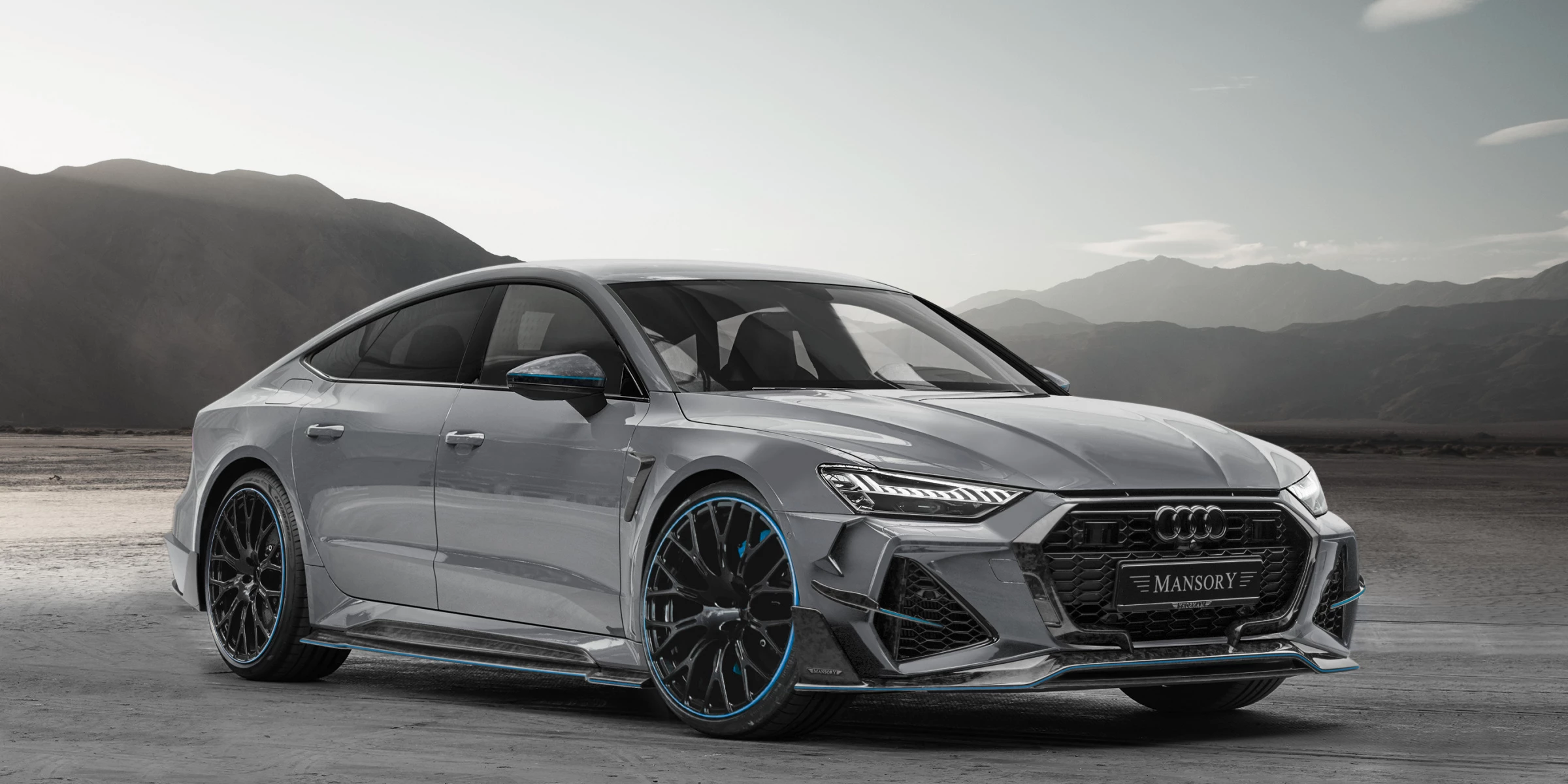
1. Audi RS7
The Audi RS7 represents a rare blend of raw power, luxury, and subtlety. At first glance, it appears to be a stylish executive liftback, designed for premium comfort rather than aggressive performance. But beneath that elegant skin lies a 4.0-liter twin-turbocharged V8 engine that produces close to 600 horsepower and over 590 lb-ft of torque.
That’s supercar-level power, capable of launching this nearly two-ton sedan from 0 to 60 mph in just around 3.5 seconds. Paired with Audi’s legendary Quattro all-wheel-drive system and an eight-speed Tiptronic transmission, the RS7 offers relentless acceleration, regardless of weather conditions. It’s a car that delivers the kind of force you’d expect from a Lamborghini, yet it remains cloaked in executive anonymity.
The RS7’s design is intentionally understated. Audi has always leaned toward elegant minimalism, and the RS7 follows that ethos to perfection. Sure, it has a slightly wider track and bigger intakes than the standard A7, but unless you’re an Audi enthusiast, you’re unlikely to immediately identify it as something special. Its smooth, fastback shape hides the fact that it can embarrass many celebrated sports cars off the line and in real-world conditions.
What makes this even more amusing is how the RS7 doesn’t ask for attention—it simply delivers. Where a Ferrari or a McLaren turns heads at every intersection, the RS7 simply blends into traffic, keeping its capabilities reserved for those who know what it can do.
Beyond performance, the RS7 is a triumph of technology and comfort. The interior is as premium as anything in the luxury segment, with Audi’s Virtual Cockpit, massaging seats, premium sound systems, and a fit-and-finish that rivals anything from Bentley or BMW. It’s a car that can be driven daily, commuted in, or road-tripped across countries—all while being faster than a Porsche 911 when the moment calls for it.
That blend of livability, anonymity, and monstrous performance is what makes the RS7 one of the most formidable sleepers on the road today. It’s the kind of vehicle that can decimate sports cars on a whim, then quietly park in a valet lot without anyone suspecting a thing.
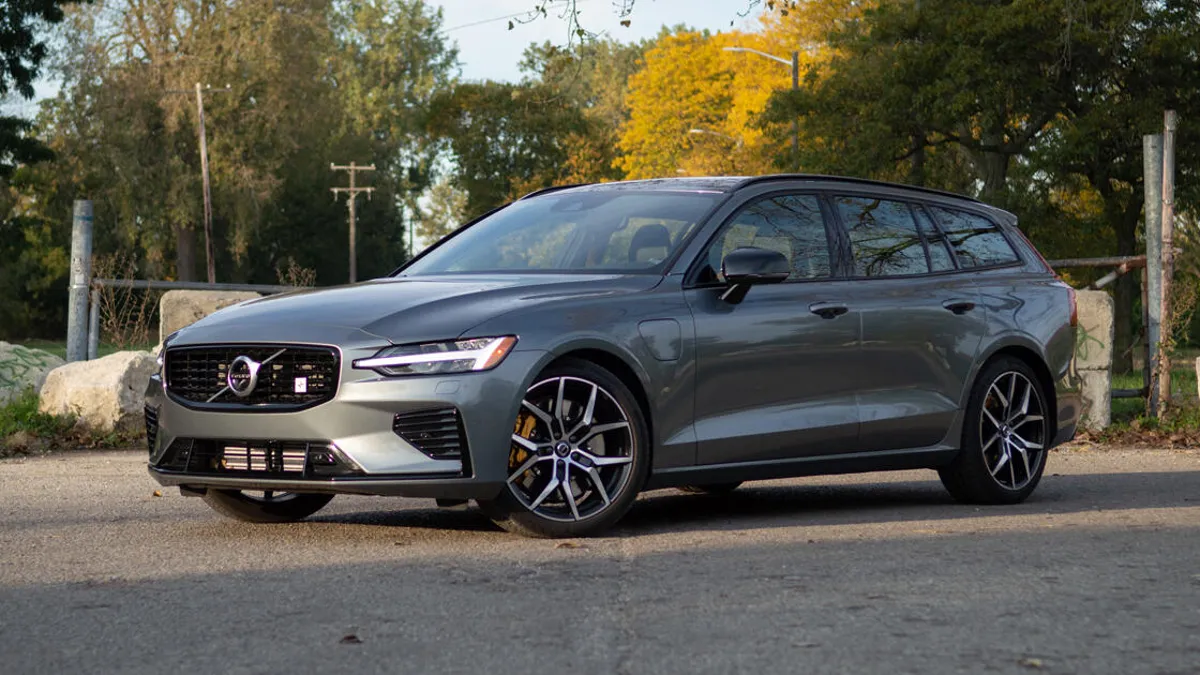
2. Volvo V60 Polestar
Volvo’s image has long been tied to safety, conservative design, and sensible driving. So when the V60 Polestar came into existence, it was an unexpected twist—a brand known for practical wagons suddenly fielding a vehicle that could challenge German performance sedans.
The V60 Polestar is powered by a turbocharged and supercharged 2.0-liter four-cylinder engine, assisted by hybrid-electric torque, that delivers a combined output of up to 415 horsepower. With a 0–60 mph time of about 4.5 seconds, this Swedish sleeper can hang with far more aggressively branded sports cars, all while offering wagon practicality and all-wheel drive assurance.
What makes the V60 Polestar so deceptive is how unassuming it looks. While it’s available in exclusive Polestar Blue and sits on lightweight forged wheels, the silhouette is classic Volvo: reserved, symmetrical, and clean. No dramatic vents, no carbon-fiber wings, no aggressive body kits—just a low-profile family car with a subtle edge.
It’s the kind of car you’d expect a professor or architect to drive, not something capable of bullying a BMW M340i or Audi S4 on a back road. The all-wheel-drive system gives it remarkable stability, while Polestar’s tuning ensures that the car doesn’t just go fast, but also handles with precision and control.
Inside, the V60 Polestar is peak Scandinavian luxury. Its interior is adorned with Nappa leather, high-quality aluminum accents, and a minimalist infotainment layout that’s intuitive without being cluttered. The seats are supportive without being stiff, and the sound insulation is world-class, offering a serene driving experience.
This duality—blazing performance with luxury civility—makes it one of the ultimate stealth machines. You can go to IKEA, pick up a bookshelf, and then beat a sports car to the next red light without breaking a sweat. It’s proof that performance isn’t about being loud or flashy—it’s about being capable, wherever, whenever, and however you want.

3. Chevrolet SS
The Chevrolet SS may be one of the most tragically underrated performance sedans of the 21st century. Originally a rebadged Holden Commodore from Australia, the SS offered American muscle in a package that resembled an ordinary family car. Under its hood lived a naturally aspirated 6.2-liter LS3 V8, pumping out 415 horsepower and 415 lb-ft of torque.
With optional six-speed manual transmission and magnetic ride control, the SS wasn’t just fast—it was thrilling to drive. It could dash from 0 to 60 mph in under 4.5 seconds, which was faster than most Mustangs and Camaros of its time, despite having four doors and a quiet exterior.
What made the SS such a brilliant sleeper was its complete lack of visual aggression. At a glance, it looked like a bulked-up Chevy Malibu or Impala—totally indistinguishable to the average passerby. There were no aggressive lines, no scoops, and no badging that screamed “track weapon.”
Even the exhaust, while throaty, was not obnoxiously loud. It was the kind of car that could idle quietly in a grocery store parking lot one minute and roar past a Mustang GT the next, leaving the other driver confused and a little embarrassed.
Despite its performance chops, the SS was remarkably livable. The interior came loaded with leather seating, a Bose audio system, and a spacious layout that made it just as suited for long family road trips as it was for autocross events. Unfortunately, its low-key demeanor and lack of marketing fanfare led to poor sales in the U.S., making it a short-lived but beloved cult classic.
Today, the SS has become a collector’s secret—an understated muscle car that’s increasingly hard to find, and more appreciated by those who know what it truly is. In a sea of try-hard performance vehicles, the SS was the real deal—powerful, practical, and invisibly deadly.

4. Mercedes-AMG E55 (W211)
When Mercedes-Benz unveiled the W211 E55 AMG in the early 2000s, it shattered the stereotype that German luxury sedans were purely about comfort. Under the hood sat a supercharged 5.4-liter V8 engine that produced 469 horsepower and 516 lb-ft of torque—insane figures for the era, especially for what looked like a conservative executive car.
This engine transformed the E-Class from a businessman’s daily into a quarter-mile monster, capable of accelerating from 0–60 mph in just over 4 seconds. It was one of the fastest sedans on Earth at the time, faster than the contemporary M5, and even some Ferraris and Porsches.
What truly defined the E55 as a sleeper was its design language. Mercedes resisted the urge to dramatize the car with unnecessary flair. Yes, it had AMG wheels and slightly beefier bodywork, but it retained the dignified stance of a mid-2000s E-Class. You could roll up to a valet in one of these, and no one would think twice.
But behind the wheel, the car told a different story. The torque hit like a hammer, and the sensation of that supercharger whine under hard throttle gave it a uniquely addictive character. It was brutal, but civilized. Fast, but mature. And few cars have achieved that balance as well as the W211 E55.
Even by today’s standards, the E55 AMG holds up impressively well. The cabin was well-appointed, with features like ventilated leather seats, COMAND navigation, and even massaging front chairs. The ride was supple thanks to adaptive air suspension, but it tightened up when pushed, giving the E55 both comfort and control.
Many AMG models today are more visually ostentatious and electronically controlled, but the W211 remains a raw, analog-infused powerhouse in disguise. It’s one of those rare cars that people forget about—until they hear it downshift and disappear.
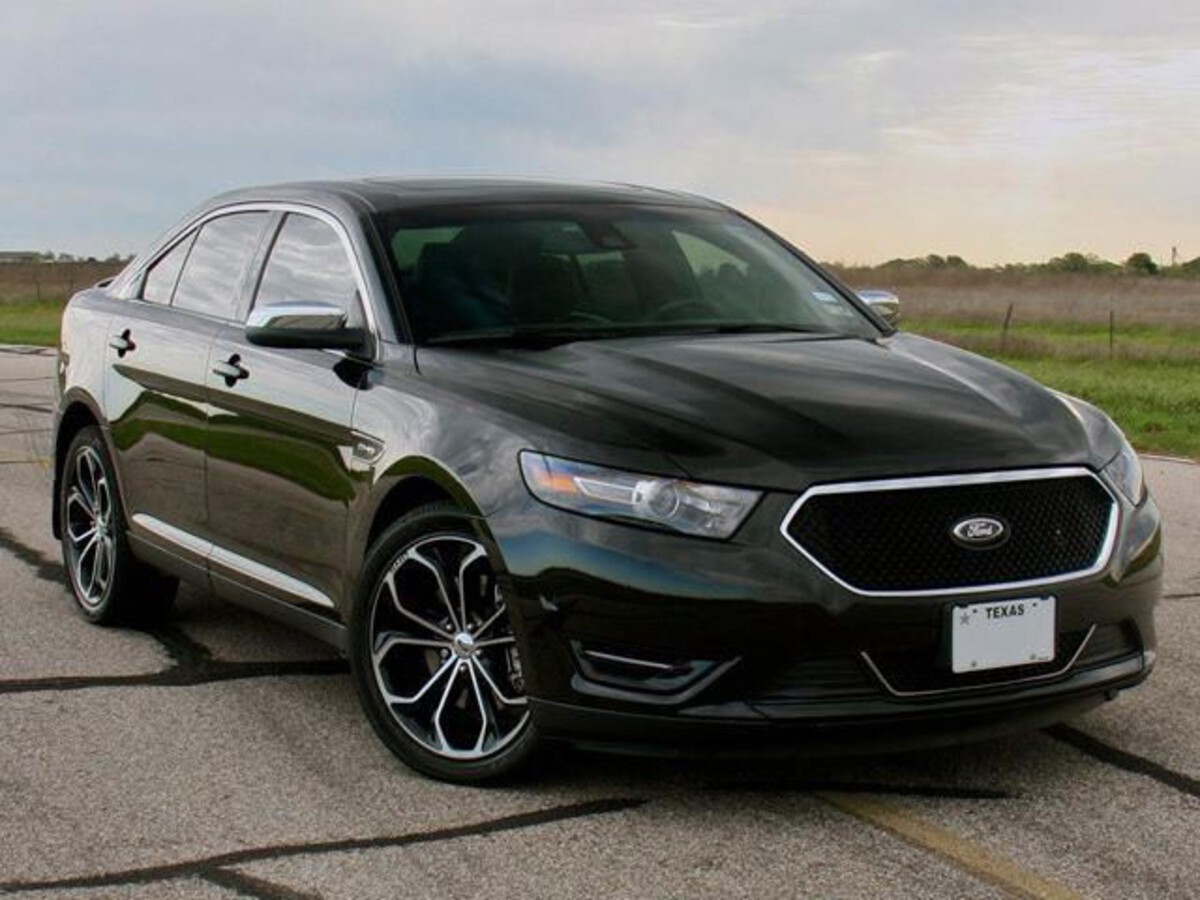
5. Ford Taurus SHO
The fourth-generation Ford Taurus SHO (2010–2019) redefined what it meant to be a performance sedan from a mainstream automaker. The SHO — short for “Super High Output” — featured a twin-turbocharged 3.5-liter EcoBoost V6 engine pushing out 365 horsepower and 350 lb-ft of torque.
That’s no small feat for a car that looked nearly identical to its base-model counterparts found on rental car lots. The SHO came standard with all-wheel drive, making it not only fast in a straight line but also stable and composed in varying driving conditions.
Visually, the SHO was modest. Even with the optional performance package and larger wheels, it didn’t scream “high performance.” To most people, it was just another large American sedan—an old-school full-size car. But for those in the know, the SHO offered legitimate muscle-sedan performance at a fraction of the cost of its European rivals.
It could launch to 60 mph in under five seconds, outpacing cars like the BMW 5 Series or Audi A6 of the same generation. It was, in many ways, a spiritual successor to the original sleeper SHO of the early ’90s.
Inside, the Taurus SHO had all the modern amenities buyers could want: leather sport seats, navigation, a high-end audio system, and available adaptive cruise control. Ford even offered a Performance Package with revised gear ratios, sport-tuned suspension, and upgraded brakes. Still, the SHO’s true magic was in how little attention it attracted. It was the perfect “sleeper” because nobody expected it to be fast.
It could line up next to a Charger Scat Pack or a Subaru WRX and hold its own—or even win—all while appearing to be just another family sedan. Its legacy lives on in whispered legends among car enthusiasts who know better than to underestimate a Ford badge.
5 With Fake Performance Badges
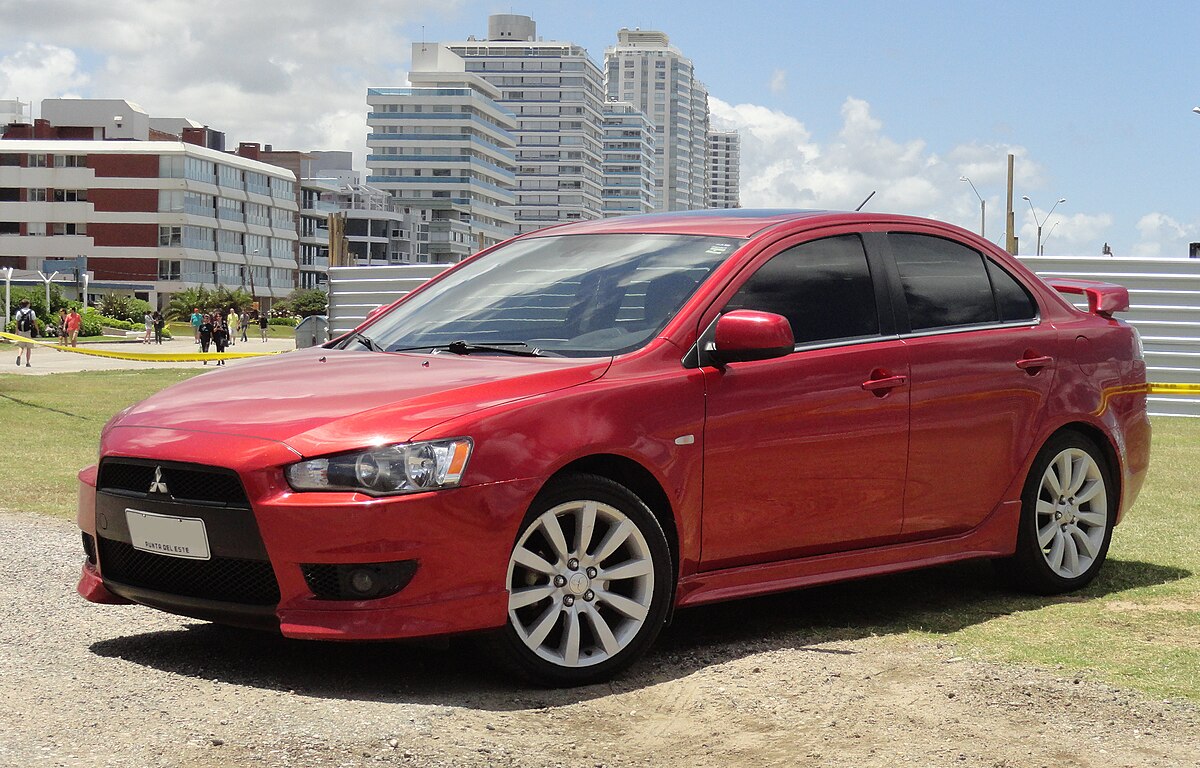
1. Mitsubishi Lancer GT
The Mitsubishi Lancer Evolution earned a cult following for its turbocharged engine, advanced all-wheel-drive system, and razor-sharp handling. It was a true rally-bred machine. Unfortunately, Mitsubishi decided to capitalize on that recognition by dressing up lesser Lancer trims, like the Lancer GT, to look like an Evo without giving them any of the performance that defined it.
The Lancer GT came with a naturally aspirated 2.4-liter inline-four engine making around 168 horsepower. That’s nearly half the power of the Evo X’s 291-horsepower turbocharged unit. It was front-wheel drive only, and the transmission options weren’t exactly confidence-inspiring.
Visually, the Lancer GT could easily fool someone unfamiliar with the model range. It shared much of the Evo’s exterior design language — aggressive bumpers, sharp headlights, and even a prominent rear spoiler in some trims. On the surface, it looked ready to go toe-to-toe with WRXs and Civic Type Rs. But once the accelerator was floored, reality hit hard.
It was a sluggish, front-heavy car that handled like a compact commuter, not a track-ready sport sedan. With a 0–60 time in the high-7 to 8-second range, it fell far short of any performance expectations its aesthetics created.
That deception caused a lot of frustration among buyers who were expecting Evo DNA in a more affordable package. Instead, they got an appearance package with none of the hardware to back it up. To make matters worse, the Lancer GT often attracted owners who treated it like a performance car — with aftermarket exhausts, visual mods, and stickers — further feeding its reputation as a poser.
While not a bad car by itself, the GT’s major sin was misrepresentation. In a world where badge equity matters, the Lancer GT wore a costume it simply hadn’t earned.
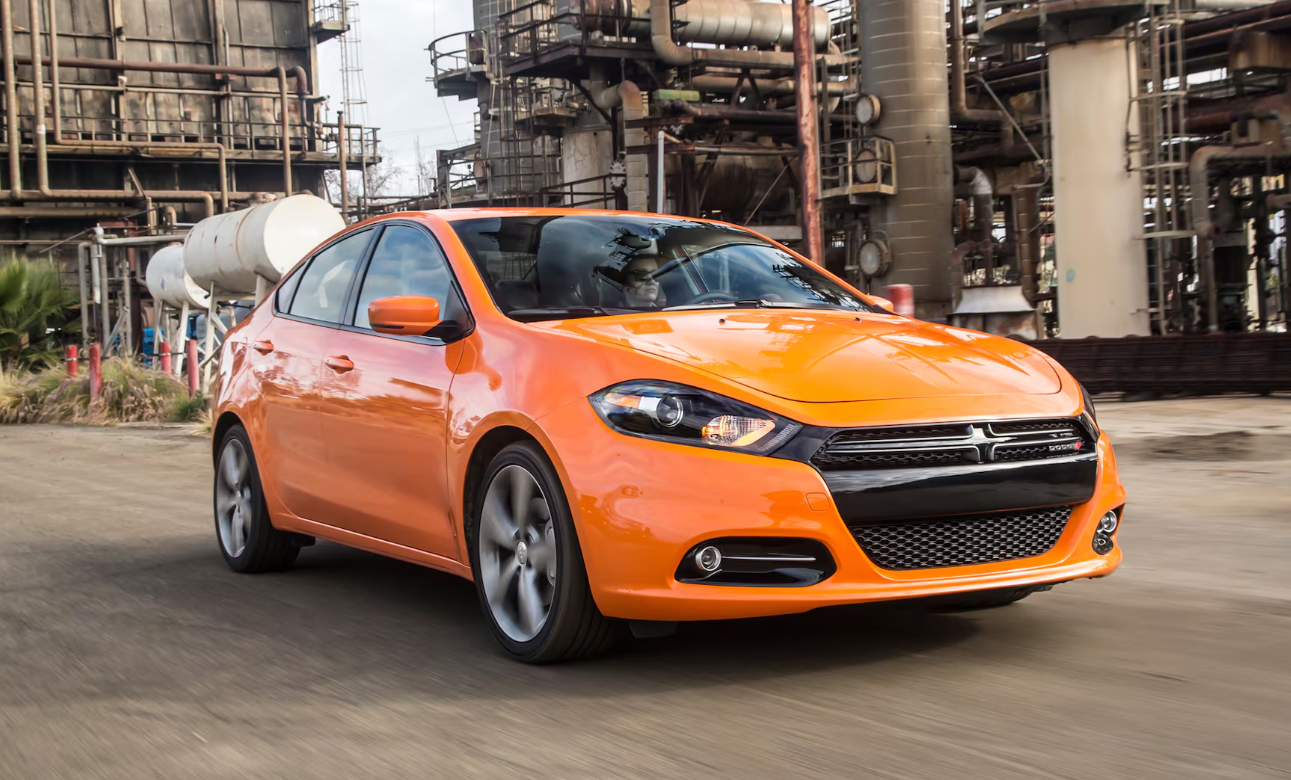
2. Dodge Dart GT
When Dodge revived the Dart nameplate in the 2010s, many enthusiasts hoped for a small, feisty car with performance leanings — especially when trims like the Dart GT hit the market. With the GT badge historically representing high-performance muscle within Dodge’s portfolio, expectations were high.
But instead of a turbocharged performance variant, the Dart GT came with a 2.4-liter Tigershark engine making 184 horsepower and front-wheel drive. While that might sound respectable on paper, the reality was disappointing: the car’s weight, gear ratios, and power delivery made it feel sluggish and unresponsive.
Dodge tried to make the Dart GT look aggressive and athletic. It got a sportier suspension, larger wheels, LED taillights, and a dual exhaust setup. The interior even featured leather-trimmed seats and a few premium tech features. However, none of this addressed the underlying issue: it just wasn’t a performance car.
The engine was coarse and uninspiring, and the handling was average at best. It had none of the finesse or excitement that you’d expect from a car wearing a GT badge — especially one from a brand known for tire-shredding Hemis and aggressive SRT models.
Adding insult to injury, Dodge marketed the GT as the top-tier Dart model. For buyers unfamiliar with what a “GT” should actually deliver, this might have seemed like a sporty, near-luxury compact. But in practice, it fell far behind competitors like the Mazda 3 or Civic Si in both engagement and performance.
While the Dart platform had potential — especially with Fiat-Chrysler’s access to Alfa Romeo underpinnings — the GT was little more than a styling exercise. It remains a cautionary tale of badge inflation, where the promise of performance was little more than a marketing gimmick.
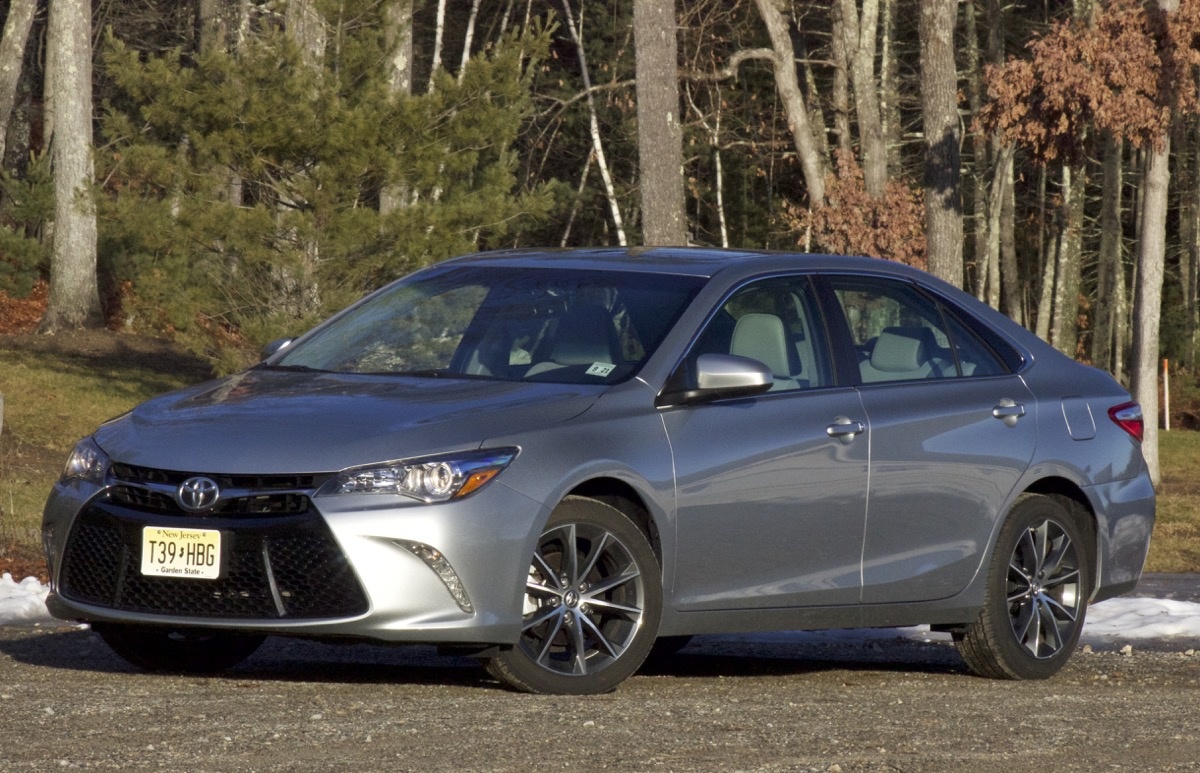
3. Toyota Camry SE/XSE
The Toyota Camry is one of the most successful sedans ever built, known for its bulletproof reliability, comfort, and practicality. In an effort to shake off its beige image, Toyota introduced the SE (Sport Edition) and XSE trims — complete with sport-tuned suspension, paddle shifters, aggressive grilles, and faux quad exhaust tips.
To the casual observer, these variants looked like legitimate sports sedans, hinting at performance on par with a BMW 3 Series or Nissan Maxima SR. But under the hood, the standard SE/XSE with a naturally aspirated 2.5-liter inline-four produced only 203 horsepower — hardly a thrilling figure in a world of turbocharged compacts and hot hatches.
To be fair, the Camry SE/XSE isn’t pretending to be a sports car on a technical level — it’s still a commuter at heart. But the issue arises when you pair aggressive design cues with the exact same engine and drivetrain found in lower trims. These trims added things like “sport mesh” grilles, larger wheels, and even optional red leather interiors, all of which created the illusion of performance.
Toyota even gave these models firmer dampers and slightly stiffer steering response, but the changes were superficial at best. It still drove like a soft, insulated commuter that was trying hard to feel athletic but never quite got there.
The real performance Camry — the V6 XSE with 301 horsepower — did offer legitimate speed, but even then, it lacked the handling dynamics to compete with real sport sedans. Meanwhile, the base SE/XSE trims continued to sell well, often purchased by drivers who liked the “look” of a fast car without needing it to actually be one.
And that’s where the deception lies. It’s one thing to offer sporty design for buyers who want it; it’s another to slap on “XSE” badging and hint at performance that simply isn’t there. In the Camry’s case, it’s a mild sedan wearing a track suit.

4. Volkswagen Jetta GLI
The idea behind the Volkswagen Jetta GLI was simple: bring the magic of the Golf GTI into a more traditional sedan body style. And in theory, that made sense. The GTI was (and still is) one of the best-driving front-wheel-drive cars on the planet. But the pre-2019 Jetta GLI fell short in several ways, despite carrying a badge that suggested it could go toe-to-toe with sport compacts.
The earlier GLI models were plagued by numb steering, lackluster handling, and a disconnect between the marketing hype and actual driving experience. It looked the part — with red accents, aggressive wheels, and sport seats — but the magic wasn’t there.
Performance-wise, the older GLIs had a turbocharged 2.0-liter four-cylinder engine making around 210 horsepower. That figure isn’t bad on its own, but the tuning and suspension setup made the car feel soft and uninspired. It lacked the snappy, tossable nature of the GTI, and without the hatchback’s weight distribution and structure, it struggled to deliver the same driving joy.
The brakes felt vague, the chassis uninvolved, and the ride neither sporty nor plush. For a car with “GLI” badging and a pricing premium, that was a major letdown.
Volkswagen did correct many of these issues in the post-2019 Jetta GLI, bringing it much closer to the GTI in terms of driving feel and hardware. But by that time, the damage had already been done. The earlier GLI had earned a reputation as a watered-down GTI — one that talked the talk but didn’t walk the walk.
Enthusiasts knew to avoid it unless they were getting a serious deal, and many saw it as a car that was built more for appearances than performance. It had the badging, the branding, and the look — but not the bite to match the bark.
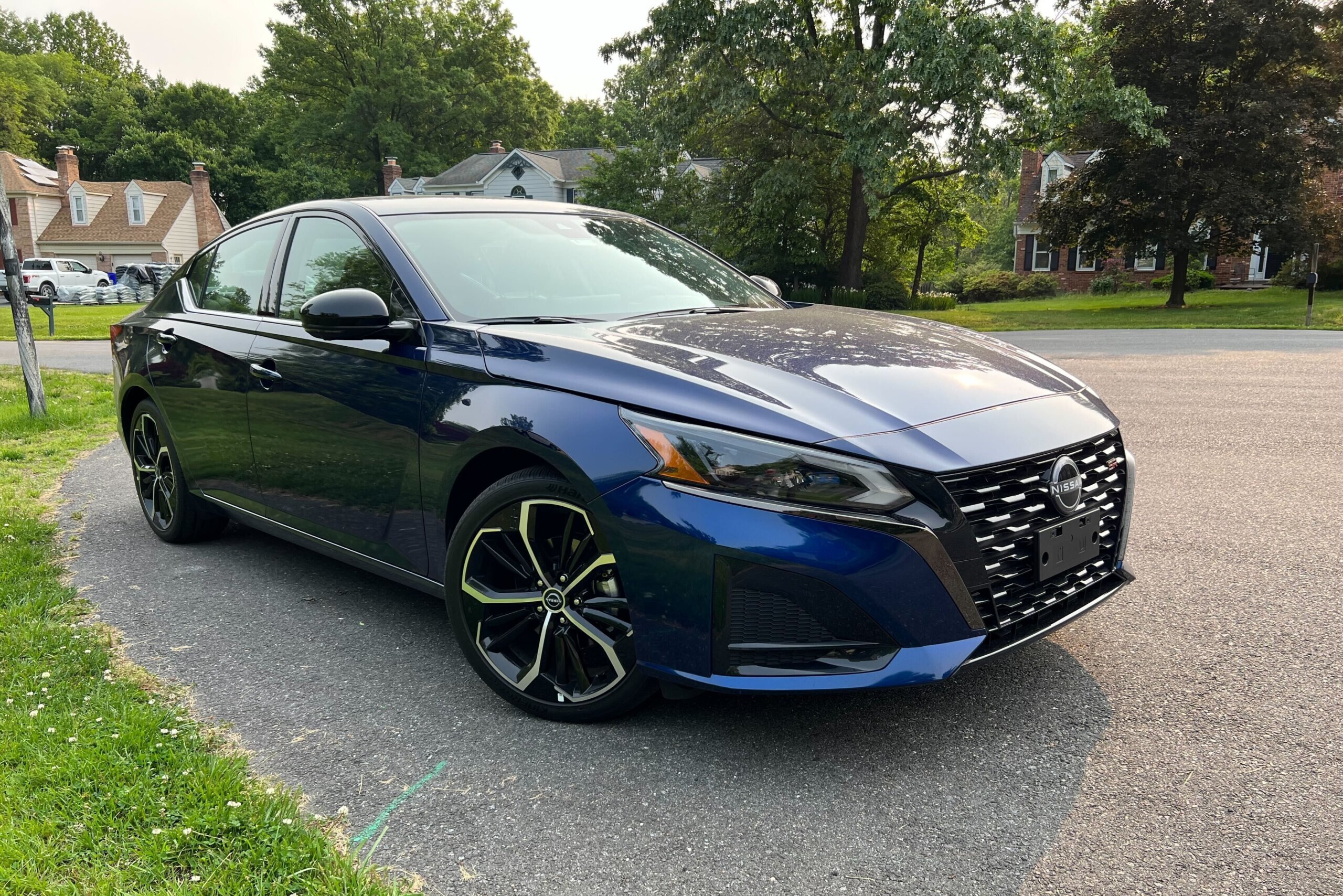
5. Nissan Altima SR
Nissan’s Altima SR trim is a classic example of marketing bravado outweighing mechanical substance. The SR — short for “Sport Rally,” supposedly — is designed to give buyers a sportier Altima experience. With its gloss black wheels, paddle shifters, and lower-profile tires, it gives the illusion of athleticism.
But beneath all that visual spice lies a naturally aspirated four-cylinder engine making just 188 horsepower, or optionally, a 2.0-liter VC-turbo four-cylinder that makes more power but is paired with a continuously variable transmission (CVT) — the ultimate performance killer.
Even with the optional turbo engine, the SR’s performance doesn’t live up to the aesthetic. The suspension tuning is slightly firmer, and the steering slightly quicker, but it’s still front-wheel drive and saddled with a transmission that constantly dulls any sense of driver engagement.
The CVT, while efficient, feels elastic and disconnected. There’s no crisp gear change, no surge of torque, no sense of involvement. It’s a car that promises a sporty drive but delivers the same experience you’d get in an entry-level midsize sedan — just with a stiffer ride and more tire noise.
Perhaps the most misleading aspect is how Nissan uses visual cues to suggest performance. Dual chrome exhaust tips, a decklid spoiler, and darkened grille treatments make it seem like the SR trim is ready for a canyon blast or track day — but it’s all theater.
The SR trim may offer minor enhancements for buyers who want a touch of flair, but it’s misleading for those expecting real performance. In truth, the Altima SR is a commuter car cosplaying as a sports sedan — and in a segment where substance matters, that kind of badge trickery doesn’t go unnoticed.
Also Read: 5 Cars With Legendary Brakes and 5 With Infamous Stopping Power
In the end, the automotive world is full of surprises, both in terms of the vehicles that exceed expectations and those that leave us questioning the integrity of their badges. The sleeper cars that have been highlighted in this article — such as the Audi RS7, the Chevrolet SS, and the Volvo V60 Polestar — are shining examples of how appearance can deceive and true performance can lurk beneath the surface.
These cars are the underdogs of the car world, largely flying under the radar but capable of holding their own (and often outperforming) some of the most revered sports cars on the market. Whether it’s the raw acceleration of the RS7 or the stealthy power of the Ford Taurus SHO, these cars prove that a flashy appearance isn’t required to deliver extraordinary driving experiences.
Their unassuming exteriors and understated designs are a perfect disguise for the monster engines, cutting-edge technology, and expert craftsmanship that lie beneath the skin. They offer the thrill of sports car performance without the attention, without the expected price tags, and without the ego of a high-performance badge.
On the flip side, the fake performance badge cars are a reminder of the importance of substance over style. While the badge may look enticing, and the aggressive design can make even the most jaded car enthusiast take a second glance, the truth lies in the driving experience.
The Mitsubishi Lancer GT, Dodge Dart GT, and Toyota Camry SE/XSE, among others, demonstrate how the illusion of performance can be used as a marketing tool. These cars may fool some buyers into thinking they’re getting a high-performance vehicle, but their underwhelming engines, uninspiring handling, and lack of genuine driving excitement make them poor substitutes for true performance.
They might be designed to look the part, but when it comes to performance, they fall flat. In many cases, these cars serve as cautionary tales of the power of marketing and the importance of being an informed buyer.
At the core of this exploration is the understanding that a car’s performance is about much more than its exterior design or badge. While the look of a car may be the first thing that catches the eye, it’s the driving experience, the handling, the engine, and the engineering that truly matter.
In some cases, a car like the Chevrolet SS or the Mercedes-AMG E55 might be quietly tearing up the road while its owners enjoy the benefits of raw performance without the need for attention-grabbing design elements. In other cases, the allure of a sporty appearance paired with a fake performance badge can leave us feeling disappointed, with little more than a vehicle that looks fast but doesn’t deliver on that promise.
As consumers, it’s essential to look beyond the flashy badging and aesthetic flourishes and focus on what truly matters: the driving experience. Whether you’re in the market for a sleeper car or looking at performance models that have failed to live up to the hype, understanding the balance between appearance and performance is crucial.
When it comes to choosing a vehicle, ask yourself: Is it the badge or the drive that excites you? Performance comes in many forms, but one thing is certain — the truth is always in the drive. Whether you’re behind the wheel of a sleeper or a poser, your driving experience will always speak louder than the badge on the front.
